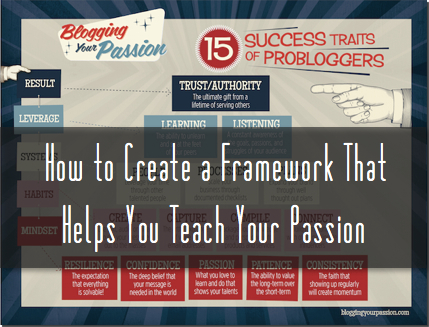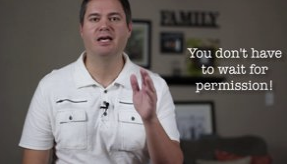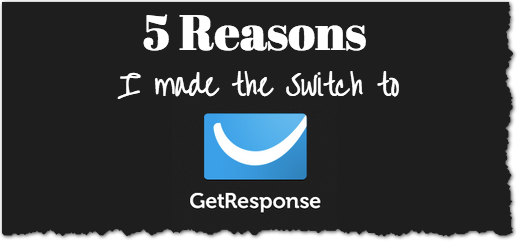How to use Personal Stories to Make You a Better Blogger
Do you remember as a kid when you had to make up games in the car? I’m the oldest of three boys and we especially became bored on long trips. We had no iPods to listen to and no in-car DVD player to watch movies.
One of our favorite games was to make up stories. Usually someone would start the story and then someone else would pick up the storyline and go bigger.
We’d laugh about the ridiculous stories we’d come up with while rolling around in the back of the station wagon – silently wondering if we were ever going to reach our destination.
Stories have a way of drawing you in. They captivate your mind and open your imagination. Sharing personal stories with your readers can accomplish several things:
- You build authenticity and trust with your audience
- People connect with you when you share both successes and failures
- You form a bond with your audience if they had a similar experience
- You draw people into your writing as we all love a good story
[Tweet “Sharing personal stories will draw people into your writing as we all love a good story.”]
If sharing personal stories is a new idea for you as a blogger, let me share with you a few simple steps you can take.
1. Capture your story ideas into a trusted place.
This can be Evernote, Google Docs, or Scrivener. Since I do most of my writing in Scrivener, it makes the most sense for me. I simply created a folder called “Personal Stories.”
Anytime I am reminded of a good story from my past I have a trusted place to capture this story.
[Tweet “Personal stories form a bond with your audience if they had a similar experience.”]
2. Divide your life into categories that make sense for you.
In an effort to keep my stories chronological, I created a few subfolders into life categories that made sense. Doing this also helps you with brainstorming which we will talk about in a little bit.
For now, think back and see if there are many major transition points in your life. Did you move at a certain age? When did you graduate from high school or college? As you can see in the picture below, I divided my life into 4 categories that made sense for me.
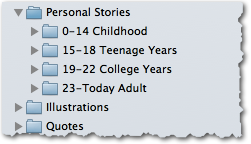
3. Brainstorm and capture story headlines as you reflect on your life.
Once your categories make sense, now it is time for you to record stories from your life. Right now we are just jotting down one line for each story. Don’t get bogged down into writing out each story at this point.
Even if you have no idea as to how you are going to tie the story into the theme of your blog, write it down. Also, be sure to write down every story that comes to mind both good and bad.
4. Use stories in your writing and speaking.
As you write or prepare for a speech, look through your stories for one that might work. You will be surprised at how many stories you can connect to your main point.
Here is a screenshot of my 0-14 in age category. When I’m writing, I’ll look through these stories I experienced as a kid to see what I might be able to use.
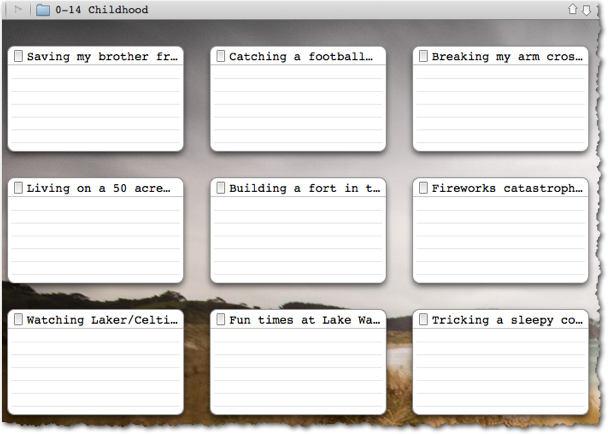
5. Record when you use a story so it isn’t overly used.
Take a moment and go back and jot down when and where you told your story. This will help you to not share the same story in 3 different blog posts.
[callout]If you want to truly unlock the power of Scrivener as a writer, then you must grab Joseph Michael’s Learn Scrivener Fast Course. [/callout]
How do you share personal stories in your writing?
